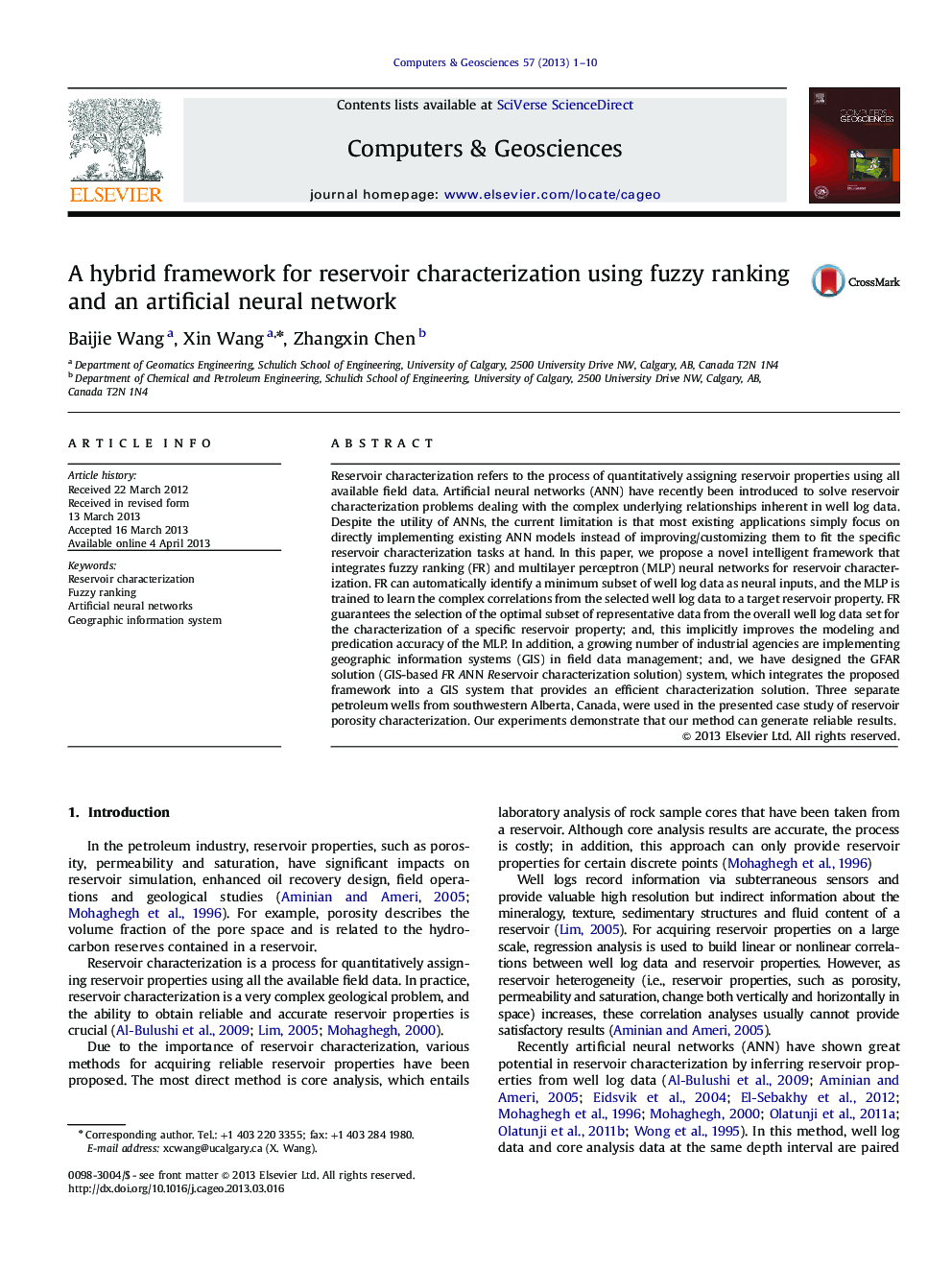| کد مقاله | کد نشریه | سال انتشار | مقاله انگلیسی | نسخه تمام متن |
|---|---|---|---|---|
| 507469 | 865125 | 2013 | 10 صفحه PDF | دانلود رایگان |

Highlight
• We develop a fuzzy ranking-neural network framework for reservoir characterization.
• Fuzzy ranking selects well log variables with close relation to the target reservoir property.
• The MLP network models the relation between the selected variables and the target reservoir property.
• We develop a GIS system to facilitate the reservoir characterization process.
• Case studies on real data demonstrate that the reservoir characterization result via the proposed framework is accurate.
Reservoir characterization refers to the process of quantitatively assigning reservoir properties using all available field data. Artificial neural networks (ANN) have recently been introduced to solve reservoir characterization problems dealing with the complex underlying relationships inherent in well log data. Despite the utility of ANNs, the current limitation is that most existing applications simply focus on directly implementing existing ANN models instead of improving/customizing them to fit the specific reservoir characterization tasks at hand. In this paper, we propose a novel intelligent framework that integrates fuzzy ranking (FR) and multilayer perceptron (MLP) neural networks for reservoir characterization. FR can automatically identify a minimum subset of well log data as neural inputs, and the MLP is trained to learn the complex correlations from the selected well log data to a target reservoir property. FR guarantees the selection of the optimal subset of representative data from the overall well log data set for the characterization of a specific reservoir property; and, this implicitly improves the modeling and predication accuracy of the MLP. In addition, a growing number of industrial agencies are implementing geographic information systems (GIS) in field data management; and, we have designed the GFAR solution (GIS-based FR ANN Reservoir characterization solution) system, which integrates the proposed framework into a GIS system that provides an efficient characterization solution. Three separate petroleum wells from southwestern Alberta, Canada, were used in the presented case study of reservoir porosity characterization. Our experiments demonstrate that our method can generate reliable results.
Journal: Computers & Geosciences - Volume 57, August 2013, Pages 1–10